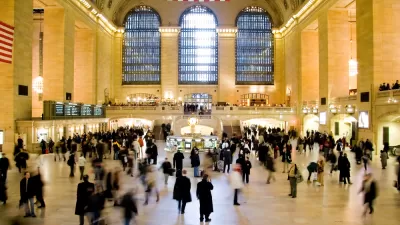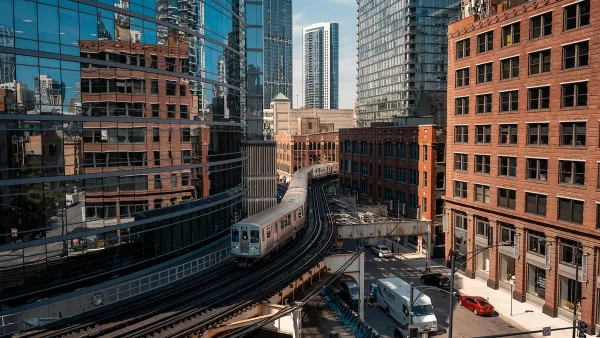City Observatory digs into the history of a Chicago suburb to answer the question: "Why don't people who say they'd like to take transit actually do it?"

Daniel Hertz examines a county where more than half of working people say they'd prefer to go to work without a car, yet nearly 90 percent drive to work.
Their reasoning is simple: In DuPage, transit doesn't go where residents need to.
Finding the reason for that requires some historical research, which Hertz delivers. He unearths the planning decisions made in the area in the 1950s, in the context of the needs of the community as well as the prevailing trends and theories at the time. Readers end up with a cautionary tale of how easily decisions about the built environment can become entrenched, and play out invisibly in everyday life years later:
[T]he decisions of planners and developers over the last several decades have created a land use pattern that essentially locks in transportation choices for all future residents, who are now stuck commuting in ways they say they’d rather not.
FULL STORY: A mystery in the suburbs

Maui's Vacation Rental Debate Turns Ugly
Verbal attacks, misinformation campaigns and fistfights plague a high-stakes debate to convert thousands of vacation rentals into long-term housing.

Planetizen Federal Action Tracker
A weekly monitor of how Trump’s orders and actions are impacting planners and planning in America.

In Urban Planning, AI Prompting Could be the New Design Thinking
Creativity has long been key to great urban design. What if we see AI as our new creative partner?

How Trump's HUD Budget Proposal Would Harm Homelessness Response
Experts say the change to the HUD budget would make it more difficult to identify people who are homeless and connect them with services, and to prevent homelessness.

The Vast Potential of the Right-of-Way
One writer argues that the space between two building faces is the most important element of the built environment.

Florida Seniors Face Rising Homelessness Risk
High housing costs are pushing more seniors, many of them on a fixed income, into homelessness.
Urban Design for Planners 1: Software Tools
This six-course series explores essential urban design concepts using open source software and equips planners with the tools they need to participate fully in the urban design process.
Planning for Universal Design
Learn the tools for implementing Universal Design in planning regulations.
Gallatin County Department of Planning & Community Development
Heyer Gruel & Associates PA
JM Goldson LLC
City of Camden Redevelopment Agency
City of Astoria
Transportation Research & Education Center (TREC) at Portland State University
Jefferson Parish Government
Camden Redevelopment Agency
City of Claremont





























